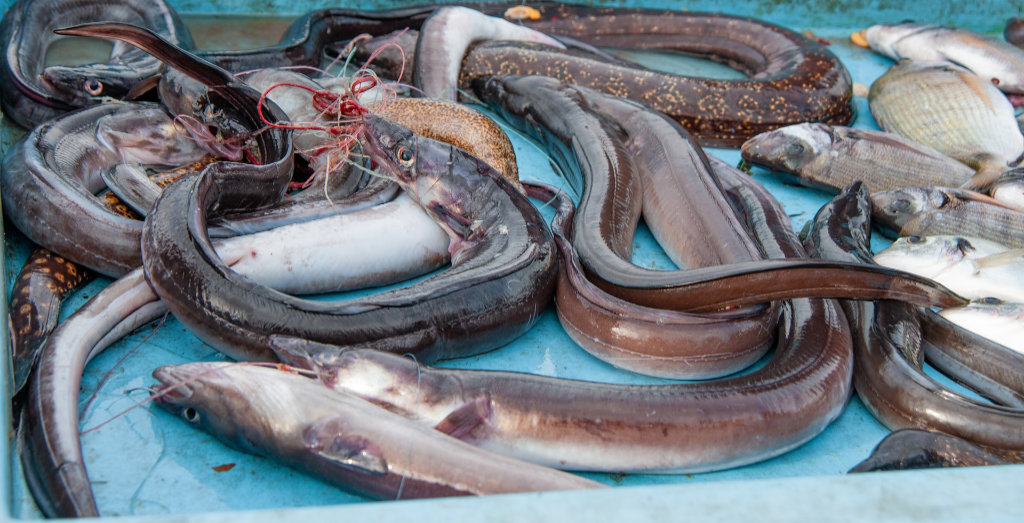
England’s eels are in trouble. Since the 1980s, the numbers in our rivers and wetlands have declined by some 90 per cent. Without urgent intervention, a once-common animal could face extinction.
There are several reasons for this dramatic fall. One of the most obvious is the growth of man-made barriers blocking access to suitable habitat. Pressure to improve flood control has resulted in bigger and better dams, locks and pumping stations, increasing the dangers to adult eels leaving for their breeding grounds in the Sargasso Sea, and young elvers returning. For some river systems, like the Parrett in Somerset, access is almost impossible.
The less obvious reason for the decline is trafficking. When one thinks of illegal trade in endangered species it is rhino horn or pangolins that come to mind, not an ordinary European fish. Yet the trade in young elvers, or ‘glass eels’ as they are called, is big business, worth billions to criminal gangs. Buyers, usually in the far east, will pay thousands of Euros per kilo for these tiny fish, to grow on in ponds or tanks to sell for food across the world. According to one source
“The illegal trade of European glass eels is believed to be one of the most significant and profitable trades involving protected species globally.”
If elvers aren’t caught responsibly, the numbers will inevitably continue to decline. Scarcity will increase their value and complete a vicious circle.
The fate of the eels is a special issue for Somerset since the Severn estuary has been a major destination for eels coming to Europe where they grow to maturity. The rivers and marshes of the Somerset Levels offer an ideal feeding ground. Historically, they have been a major food source for wildlife, and supported a sustainable fishery as well. Both are now under threat.
Vanessa Becker-Hughes has personal experience of the collapse of eel numbers. She remembers, as a teenager, fishing the local rivers and ditches at night with her grandfather and always netting numbers of large healthy eels, to be sold as cheap local food. Now, she searches for traces of eel DNA in the waterways feeding into the Axe, the Brue, the Tone and Parrett rivers, and often finds very little.
Vanessa is the driving force behind an enterprising local initiative to help reverse the decline in the eels’ fortunes. Volunteers can’t fight the smugglers, but they can help the animals surmount or bypass the barriers we have placed in their way. They can install ropes that the elvers climb to assist their migration. They can catch them as they move up the Bristol Channel, to release in suitable surroundings. They also plan to raise some to juveniles in tanks in schools, to educate children in eel conservation, and then return the animals to local rivers. No-one has managed to get eels to breed in captivity, so their survival depends wholly on the long-distance migration to and from the western Atlantic.
A project started in a single small village has now spread to a cross-Somerset collaboration with links to a Europe-wide conservation organisation, the Sustainable Eel Group. Their plans are ambitious, including a target of catching two million elvers per year for release in suitable habitats. They plan to install tanks for education and growing eels in 50 schools, and to increase their monitoring of river catchments to assess where eels are and are not present. It is not possible for volunteers to re-engineer the waterways, but they can help apply public pressure to the Environment Agency, water companies and drainage boards to take account of eel migration in their work.
Up to now the work of eel conservation has been supported by a strong European framework of regulation and enforcement. Since Brexit, our adherence to European standards and involvement in transnational co-operation has been under threat. The active involvement of community groups will be critical, both to raise awareness and take practical steps to protect this endangered species.




